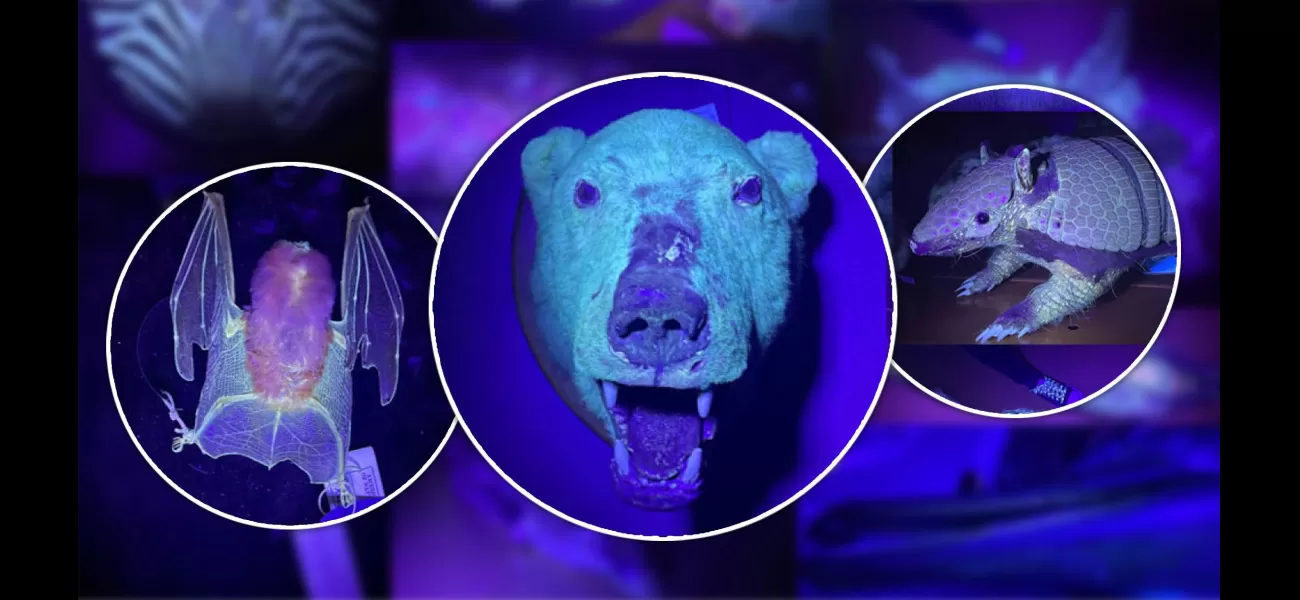After dark, animals do strange things with no known explanation.
Animals hibernate to survive winter.
October 5th 2023.

It's a well-known fact that certain animals, such as the platypus and possums, can glow in the dark when exposed to ultraviolet light. However, a new study has revealed this phenomenon is much more widespread than previously thought.
Led by Dr. Kenny Travouillon of the Western Australian Museum, a team of researchers has conducted a thorough examination of the museum's collections and discovered that biofluorescence - the re-emission of light of a longer wavelength - is present in an astonishing 125 species of mammal.
From zebra stripes to fox ears and bat wings, the team noticed a variety of fluorescent colors, ranging from ghostly green to fluorescent pink, when shining ultraviolet light on fur, quills, whiskers, teeth, claws, and skin. The most common examples of biofluorescence were found in nocturnal species, though the team was unable to explain why these animals glow in the dark.
Interestingly, the study found that biofluorescence was less common in flying or aquatic mammals than those that live on land or in trees. This suggests the phenomenon may be related to the need for certain animals to be more visible at night, such as when looking for a mate.
The authors of the study suggest that future investigations into biofluorescence should be carried out on living or recently deceased animals, to ensure preservation chemicals are not affecting the results. It's an exciting development in the natural world, and one that could provide us with many interesting insights.
Led by Dr. Kenny Travouillon of the Western Australian Museum, a team of researchers has conducted a thorough examination of the museum's collections and discovered that biofluorescence - the re-emission of light of a longer wavelength - is present in an astonishing 125 species of mammal.
From zebra stripes to fox ears and bat wings, the team noticed a variety of fluorescent colors, ranging from ghostly green to fluorescent pink, when shining ultraviolet light on fur, quills, whiskers, teeth, claws, and skin. The most common examples of biofluorescence were found in nocturnal species, though the team was unable to explain why these animals glow in the dark.
Interestingly, the study found that biofluorescence was less common in flying or aquatic mammals than those that live on land or in trees. This suggests the phenomenon may be related to the need for certain animals to be more visible at night, such as when looking for a mate.
The authors of the study suggest that future investigations into biofluorescence should be carried out on living or recently deceased animals, to ensure preservation chemicals are not affecting the results. It's an exciting development in the natural world, and one that could provide us with many interesting insights.
[This article has been trending online recently and has been generated with AI. Your feed is customized.]
[Generative AI is experimental.]
0
0
Submit Comment





